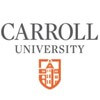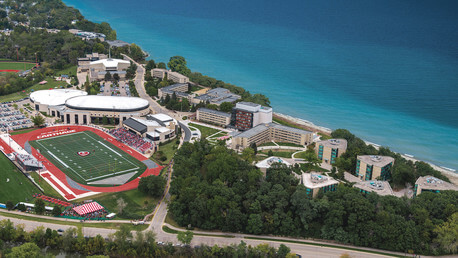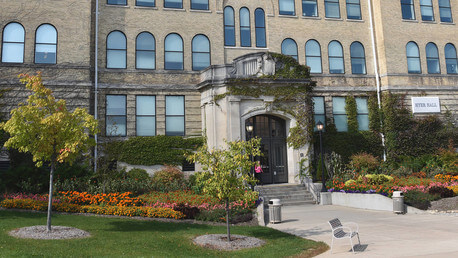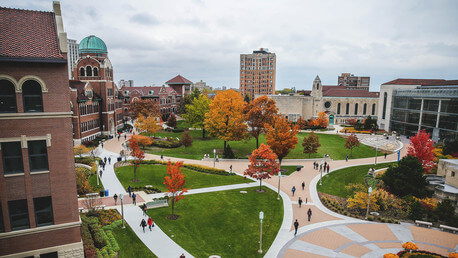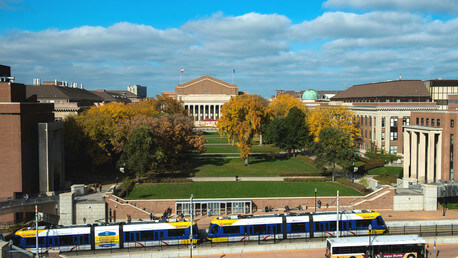Tuition, Cost & Aid
Affordability and Cost
Average Net Price Average net price for full-time, first-time degree/certificate-seeking undergraduates paying the in-state or in-district tuition rate who were awarded grant or scholarship aid from federal, state or local governments, or the institution. Other sources of grant aid are excluded. Aid awarded anytime during the full aid year is included.
Average net price is generated by subtracting the average amount of federal, state or local government, or institutional grant and scholarship aid from the total cost of attendance. Total cost of attendance is the sum of published tuition and required fees (lower of in-district or in-state), books and supplies and the weighted average room and board and other expenses.
Average net price is generated by subtracting the average amount of federal, state or local government, or institutional grant and scholarship aid from the total cost of attendance. Total cost of attendance is the sum of published tuition and required fees (lower of in-district or in-state), books and supplies and the weighted average room and board and other expenses.
$24,094
Average Net Price By Family Income
Tuition
| In-State Tuition In-state tuition is the tuition charged by institutions to those students who meet the state's or institution's residency requirements. In-district tuition is the tuition charged by the institution to those students residing in the locality in which they attend school and may be a lower rate than in-state tuition if offered by the institution. | $36,190 |
| Out-of-State Tuition Out-of-state tuition is the tuition charged by institutions to those students who do not meet the state's or institution's residency requirements. Out-of-district tuition is the tuition charged by the institution to those students not residing in the locality in which they attend school. | $36,190 |
Additional Costs
Room and Board The weighted average for room and board and other expenses is generated as follows:
| $11,564 |
| Books and Supplies | $1,210 |
| Tuition Payment Plan | Yes |
Financial Aid: visit page
Financial Aid Email: [email protected]
Aid & Grants
0
100
84%
Need Met
Students Receiving Gift Aid Percent of undergraduate students awarded federal gift aid. Federal gift aid includes any grant or scholarship aid awarded, from the federal government, a state or local government, the institution, and other sources known by the institution. Students Receiving Grants Percent of undergraduate students awarded grant aid. Grant aid includes any grant or scholarship aid awarded, from the federal government, a state or local government, the institution, and other sources known by the institution. Students receiving state aid Students receiving federal aid
23%
Average Aid Per Year
$21,145
23%
Average Federal Grant Aid Per Year
$5,353
Average Institution Grant Aid Per Year
$18,974
27%
Average State Grant Aid Per Year
$3,286
24%
Average Federal Grant Aid Per Year
$5,353
Average Grant & Scholarship By Family Income
Total Needs Based Scholarships/Grants Total amount of grant or scholarship aid awarded to all undergraduates from the federal government, state/local government, the institution, and other sources known to the institution.
$45,249,660
Total Non-Need-Based Scholarships/Grants
$13,470,876
Student Loans
Students Borrowing Loans Loans to students - Any monies that must be repaid to the lending institution for which the student is the designated borrower. Includes all Title IV subsidized and unsubsidized loans and all institutionally- and privately-sponsored loans. Does not include PLUS and other loans made directly to parents.
66%
Average Loan Amount Per Year
$9,108
Students receiving federal loans
66%
Average Federal Loans Per Year
$5,424
Average Other Loans Per Year
$13,840
Average Debt at Graduation The median federal debt of undergraduate borrowers who graduated. This figure includes only federal loans; it excludes private student loans and Parent PLUS loans.
$23,250
Loan Default Rate
2%
US National: 7%
Median Monthly Loan Payment The median monthly loan payment for student borrowers who completed, if it were repaid over 10 years at a 5.05% interest rate.
$258
What Students Are Saying
Carroll is a VERY expensive school for most people. I would say that incoming students should definitely check out the scholarships offered at Carroll, along with anywhere else they can find them! Even if you only get the ones offered by the university, it can REALLY make a difference in price!
Erin from Appleton, WI
Your buck is stretched three ways, which is sort of difficult considering deer only have two antlers! Academic wise, yes. Carroll professors teach information relevant to the course and for your major that will be on standardized exams that you might take for graduate school or the field you will be going into. The professors establish personal and caring relationships with their students. They also always have their office doors open to answer any and all questions thoroughly and one on one. Plus as mentioned before, the small class sizes (student to professor ratio 18:1) and the fact there are no TA's is an added bonus! Tutoring and supplemental instruction (study groups led by upperclassmen who have completed and did exceptional in the course) are free to utilize by students. When it comes to housing, although the living corridors are spacious and nice, especially the suite style dorms, they are expensive. It is also required that students must live in campus housing through their junior year which can be a downside. Although dining dollars are an extremely useful thing to have, it is annoying that meal swipes do not roll over and are not refundable. I have the lowest meal plan, 140 swipes, and at the end of every semester I have anywhere from 13-30 meal swipes left over and just purchase cases, and I mean CASES, of drinks with leftover meal swipe money and it would be nice if the money was just refunded to pay for tuition.
Morgan from Eland, WI
Although the small school setting is great, the education is amazing, and the people are all incredible, it is very expensive. That being said, they came up with a very good scholarship package.
Natalie from Waukesha, WI
While Carroll is expensive, the price is worth the education and experience you will receive.
Mariah from McHenry, IL
My main concern in this department is the price of books at the bookstore and its buyback policy. One pays so much for a book then receives little to nothing at the end of the semester. For instance, at the beginning of the school, a book was bought at $160 used. At the end of the semester, $60 of the money was given back. Many colleges have much fairer policies and try to give back at least half of the money. Also, housing is a bit overpriced, especially for the on-campus apartments. For the value of these, the quality is not there. Most of them need updates and/or repairs. Dorms are OK; in fact, most of them have been renovated within the past 5-10 years.
Brianna from Bradley, IL
If your high school gpa and have a decent ACT score, 27 or higher. You get enough scholarship money to make it the same cost or less than a state school.
Being a private university, the tuition is a little pricy. But Carroll University offers scholarships to every accepted student. The tuition also does cover a lot of important things that help students success. The learning center offers tutors for every subject that students can attend without additional cost as well as sessions with a selected classmate to go over class material. This assures that students get the best out of their education and really understand the material and not just memorize to cram for exams. Tuition also covers gyms for those who enjoy working out and fitness classes that are held at specific times during the week. It also covers a campus shuttle which will take you anywhere around campus or slightly off campus as well.
Savannah from Ocononmowoc, WI
